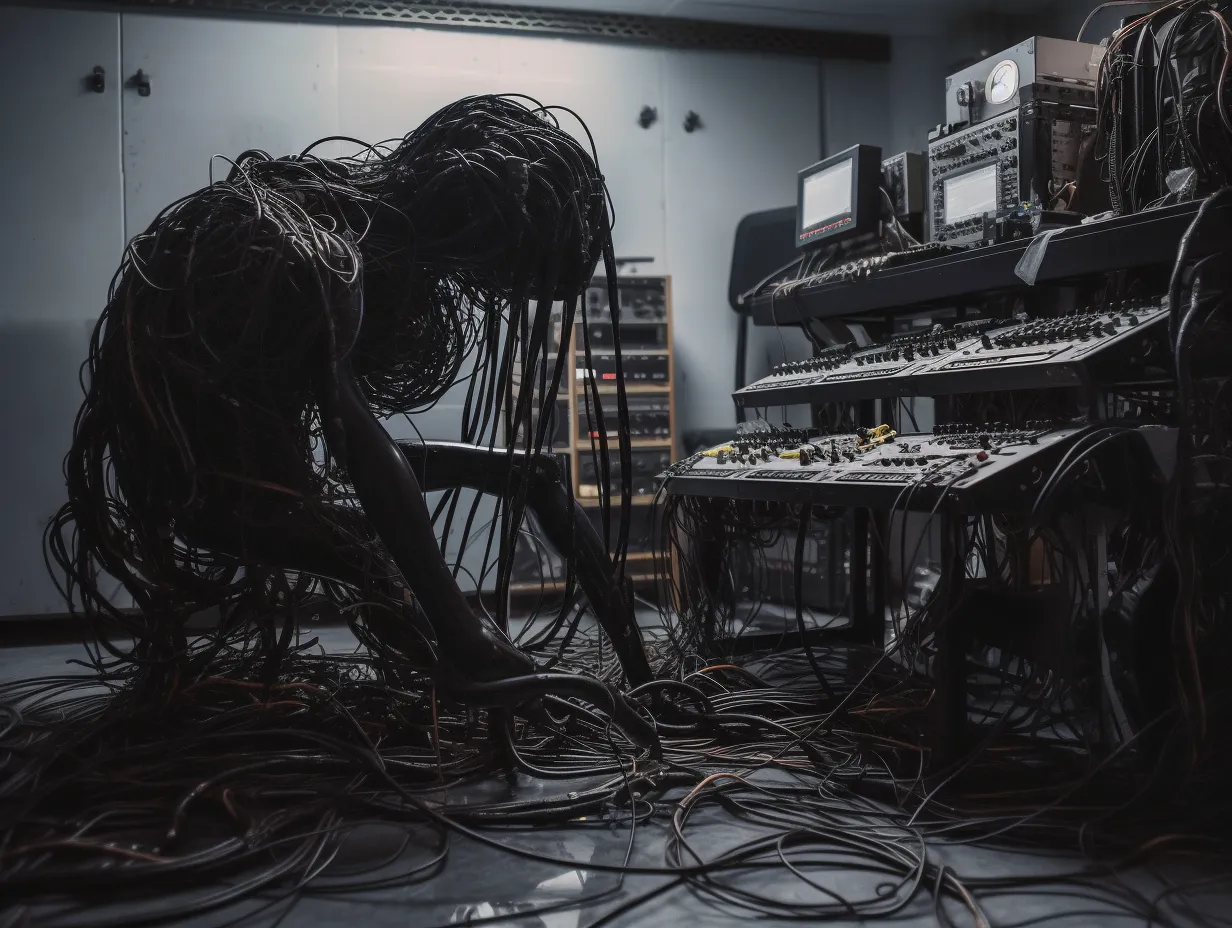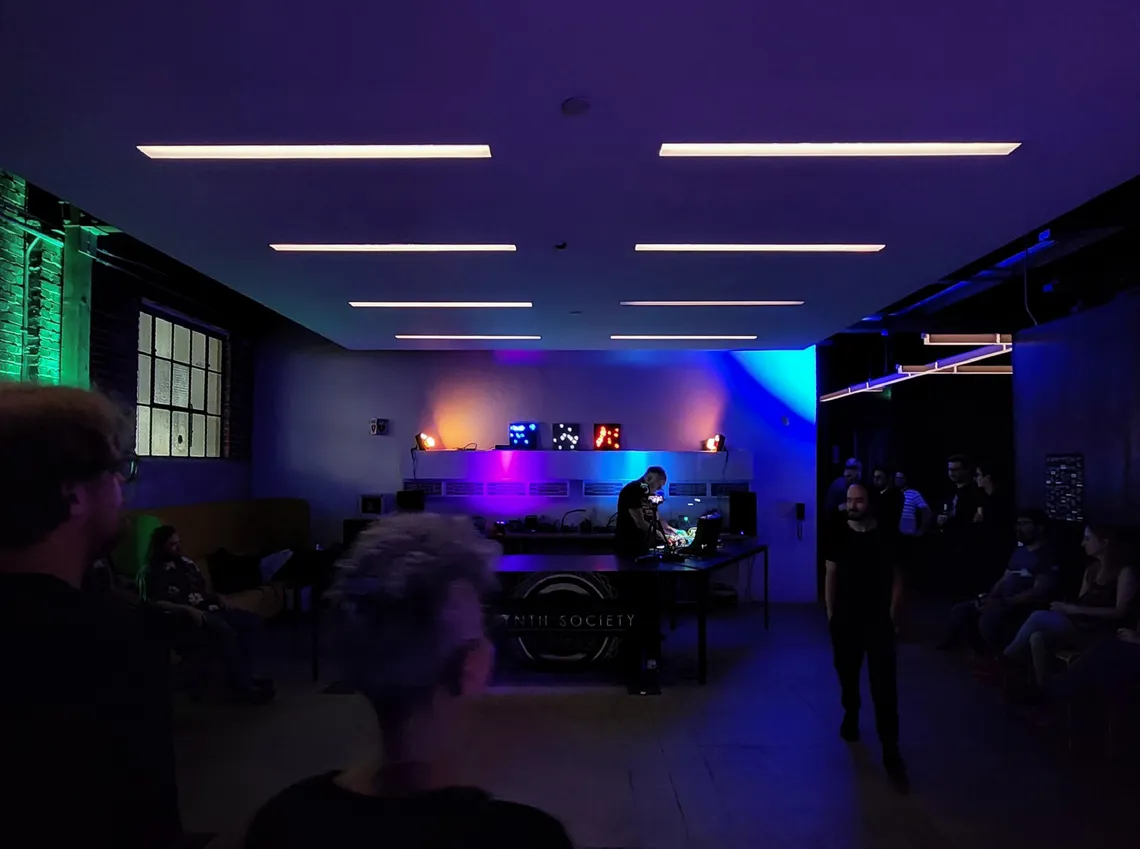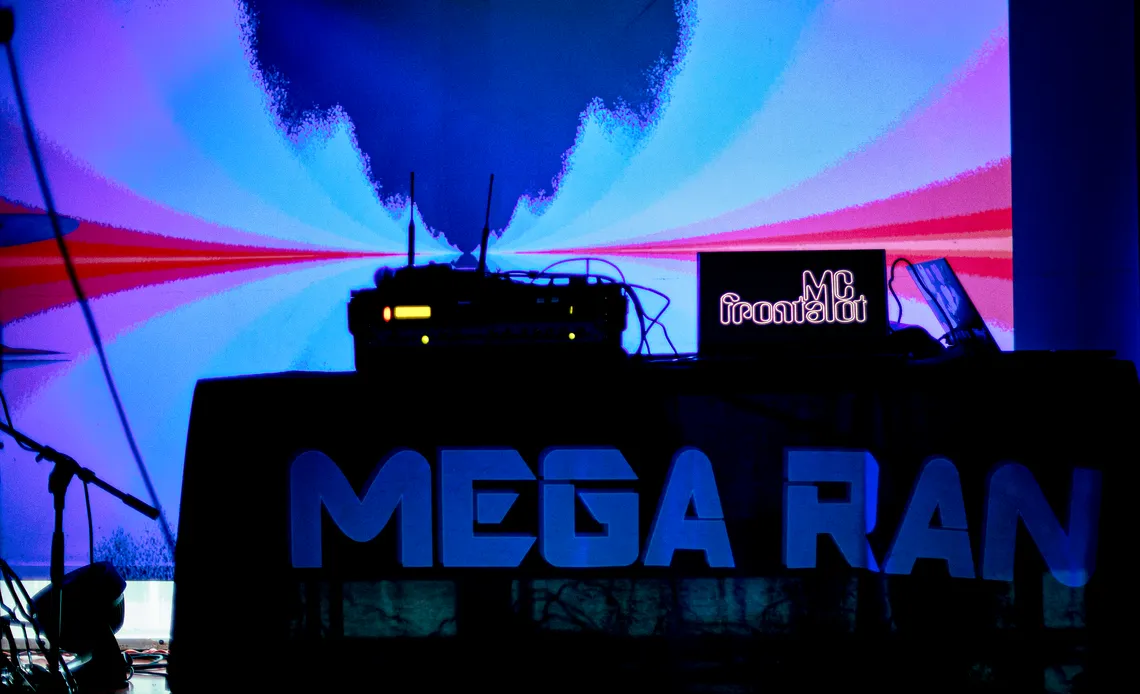In the labyrinthine realm of electronic music, the Eurorack modular synthesis community has blossomed into a sanctuary for sound sculptors and audio architects. But recently, whispers of a 'monster' lurking among their patch cables have grown louder, inciting heated debates and dividing the community. This monstrous creation? None other than the seemingly innocuous Musical Instrument Digital Interface, or MIDI.
With its unassuming appearance, one might wonder how MIDI could possibly evoke such passionate reactions from the Eurorack faithful. However, as we peel back the layers of this controversial trend, it becomes evident that integrating MIDI into Eurorack systems has given birth to a musical Frankenstein's monster that's challenging the very foundations of modular synthesis.
We'll venture into the MIDI-Eurorack controversy, highlighting the uproar caused by this unexpected fusion. As we navigate through the chaotic, knob-twisting world of this polarizing debate, we'll attempt to answer the question: Is MIDI truly the sinister force it's made out to be, or is it simply a misunderstood creature seeking acceptance in the ever-expanding universe of electronic music? Join us as we unearth the reasons behind the debate and explore the potential benefits and pitfalls of welcoming this misunderstood monster into the Eurorack family.
The contenders
In the electrifying realm of Eurorack, where sonic titans clash amid swirling currents of voltage, a new breed of hybrid monsters has emerged, blurring the lines between MIDI and CV. The Coral from Oxi Instruments, Vector Wave by RYK, and the Knobula creation Poly Cinematic, are just a few examples of modules that have roared onto the scene with their daring integration of both digital and analog realms. These controversial creatures have stormed the Eurorack world, challenging purists and captivating enthusiasts with their seamless fusion of MIDI and CV functionality.
Armed with innovative features and an insatiable appetite for stirring up debates, these modular beasts have triggered a whirlwind of discussions and intrigue, as they defy traditional boundaries and pave the way for uncharted sonic territories. Let's delve into the captivating and contentious domain of these legendary Eurorack hybrids!
The two-faced nature of MIDI in Eurorack
On one side of the battlefield, MIDI enthusiasts praise its ability to bring the world of Eurorack into harmony with other MIDI-enabled devices, like computers, synthesizers, and drum machines. The potential for musical experimentation soars to new heights, with complex and diverse performances that even Bach would have envied.
Opposing this musical matrimony, CV purists stand their ground, extolling the virtues of an "organic" and "hands-on" approach to creating soundscapes. They believe that the voltage-driven nature of CV offers a more intimate, expressive performance, reminiscent of an artist painting with delicate brushstrokes. After all, many Eurorack modules were designed with CV in mind, and MIDI may be an unwelcome guest at the party.
Pros
- Compatibility with other MIDI-enabled devices: One of the main advantages of adding MIDI to Eurorack is that it enables seamless integration with other MIDI-compatible devices, such as computers, synthesizers, and drum machines. This makes it easier to incorporate Eurorack into a larger setup and create more complex and varied musical performances.
- More precise timing and sequencing: MIDI offers precise timing resolution, which is useful for sequencing and controlling Eurorack modules with greater accuracy. This allows for more complex and sophisticated patterns and sequences to be created, as well as more precise control over parameters like envelope shapes and modulation rates.
- Easier to control multiple modules: With MIDI, it's simple to control multiple modules simultaneously, which can be more difficult to achieve with CV alone. This allows for greater flexibility and control over a Eurorack system, and makes it easier to create complex patches and sequences.
- Simplified workflow: For those who are already familiar with MIDI and MIDI-enabled devices, adding MIDI to Eurorack can simplify their workflow and make it easier to integrate Eurorack into their existing setup. This can save time and make the process of creating music more streamlined and efficient.
- More options for external control: With MIDI, it's possible to use external controllers like keyboards or drum pads to control Eurorack modules. This can provide a more tactile and expressive way of playing and controlling a Eurorack system, and can help to bridge the gap between traditional and modular synthesis.
Cons
- Additional cost: Adding MIDI to Eurorack may require the purchase of additional modules or equipment, which can increase the overall cost of building a modular synthesizer system.
- Increased complexity: The addition of MIDI can make a Eurorack system more complex, with more cables, settings, and options to manage. This may be overwhelming for some users, particularly those who are new to modular synthesis.
- Potential for latency: MIDI messages can experience latency, which can result in timing inaccuracies or "jitter" when controlling Eurorack modules. This can be particularly noticeable when using MIDI to control fast or intricate sequences.
- Reduced tactile control: MIDI controllers typically provide less tactile feedback than physical knobs or buttons, which can make it more difficult to achieve a precise or expressive performance. This may be particularly important for musicians who prefer a more hands-on approach to creating music.
- Not all Eurorack modules support MIDI: While many Eurorack modules support MIDI, not all of them do. This can limit the flexibility of a modular synthesizer system and require users to purchase additional modules or workarounds to achieve the desired functionality.
Unraveling the importance of precision
MIDI and CV have different characteristics, and each has its own strengths and weaknesses. In terms of precision, MIDI and CV can both be very precise, but they have different resolutions and limitations.
MIDI, the musical maestro of the digital age, has long been celebrated for its impeccable timing and sequencing prowess. With its ability to create intricate patterns and exert precise control over parameters such as envelope shapes and modulation rates, it's no wonder MIDI has been embraced by many as the go-to solution for connecting their Eurorack systems with the rest of the electronic music world.
MIDI messages are digital, meaning that they consist of discrete values that are encoded as 7-bit or 8-bit values. This allows for precise timing resolution, with a typical MIDI clock resolution of 24 pulses per quarter note (PPQN). MIDI messages can also be time-stamped, allowing for precise synchronization with other devices.
However, while MIDI's timing precision is generally impressive, it is not entirely without fault. MIDI messages can experience latency, which leads to timing inaccuracies or the dreaded "jitter" when controlling Eurorack modules. This latency can be caused by a variety of factors, such as the hardware or software used to transmit MIDI messages, the complexity of the MIDI data being sent, or even the length of the MIDI cable itself.
CV, on the other hand, is an analog signal that is typically represented as a voltage between -10V and +10V. The precision of CV depends on the resolution of the digital-to-analog converters (DACs) used in the modules, as well as the quality of the voltage control circuits. Typically, CV signals have a resolution of around 12 bits, which provides a precision of approximately 1/4096th of the voltage range.
So, while MIDI can offer very precise timing resolution, CV can provide a more continuous and dynamic control over voltage, which can be particularly useful for controlling parameters like pitch, filter cutoff, or modulation depth. Both MIDI and CV have their own advantages and limitations, and the choice between the two ultimately comes down to personal preference and the specific needs of the user.
The Coexistence of CV and MIDI
Each side extols the virtues of their preferred method, but an intriguing middle ground is emerging, where the analog charm of CV and the digital precision of MIDI coexist in harmony, allowing for greater flexibility and control over a system's parameters. Here are some examples:
- MIDI to CV converters: There are modules available that can convert MIDI messages to CV signals, allowing MIDI-enabled devices to control CV-enabled modules. This can be particularly useful for integrating Eurorack systems with MIDI-enabled keyboards or other controllers, as well as for using software sequencers or DAWs to control modular synthesizers.
- CV to MIDI converters: Some modules can also convert CV signals to MIDI messages, allowing CV-enabled modules to be controlled by MIDI devices. This can be useful for creating complex sequences or modulations with CV, and then triggering or controlling external MIDI devices or software.
- Combination modules: Some modules combine both MIDI and CV functionality, allowing for greater flexibility and control over a system's parameters. These modules can provide features like MIDI clock synchronization, MIDI note-to-CV conversion, or CV-to-MIDI conversion, among others.
- Manual patching: Finally, it's also possible to manually patch MIDI and CV signals between modules using patch cables, allowing for more customized and complex routing and control over a system's parameters.
Several Eurorack modules combine both MIDI and CV functionality, offering users the flexibility to integrate and control their modular systems using both approaches. Some popular modules that provide this hybrid functionality include:
- Expert Sleepers FH-2: The FH-2 is a versatile and powerful MIDI-to-CV converter and clock generator. It offers multiple inputs and outputs for MIDI and CV, enabling users to control their Eurorack system using external MIDI controllers, sequencers, or DAWs. Additionally, the FH-2 can act as a MIDI clock source, providing precise synchronization between MIDI and CV devices.
- Mutable Instruments Yarns: Yarns is a MIDI-to-CV interface module that supports polyphony, arpeggiation, and sequencing. It can convert MIDI data into CV and gate signals, allowing users to control their Eurorack system with MIDI-enabled devices such as keyboards or sequencers. Yarns also features a built-in arpeggiator, sequencer, and clock source, providing various options for generating and controlling CV signals.
- Befaco VCMC: The Befaco VCMC (Voltage-Controlled MIDI Controller) is a unique module that allows users to convert CV signals into MIDI data, providing an interface between the modular world and MIDI-compatible devices. The module features eight faders, buttons, and CV inputs, which can be assigned to control various MIDI parameters such as note, velocity, and CC values. This enables users to control external MIDI devices or software using CV signals generated by their Eurorack system.
- Polyend Poly 2: Poly 2 is a MIDI-to-CV converter that supports multiple channels and polyphony. It can be used to control a Eurorack system using external MIDI devices or software and offers various features such as MPE (MIDI Polyphonic Expression) support, clock synchronization, and per-channel voice allocation. Poly 2 is designed to provide a seamless integration between MIDI and CV, offering users the ability to create complex and expressive performances using both technologies.
A harmonious alliance
Both MIDI and CV have their unique strengths and weaknesses. They can coexist in a modular synthesizer system in various ways, offering greater flexibility and control over a system's parameters. Whether MIDI is Eurorack's Jekyll or Hyde depends on personal preference and the specific needs of the user. So, what do you think? Is MIDI the hero Eurorack deserves, or the villain it never asked for? Let us know in the comments below.





